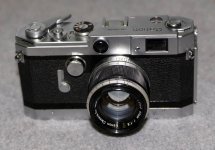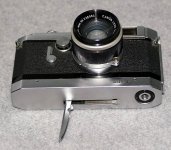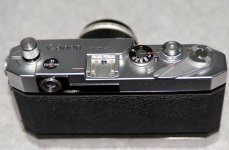Rangefinder Man
Established
Hello All
I have a friend who repairs rangefinder cameras and decided the he would mate a VL2 with a VT, with a splash of VL. He put a VT base on a VL2 and put a VL shutter dial with the 1/1000 speed. To acheive 1/1000 second speed, all he has to do was drill a extra hole in the shutter disc, under the top shell. Now he can cock the camera from the top or bottom! Maybe Canon should have thought of it!
I have a friend who repairs rangefinder cameras and decided the he would mate a VL2 with a VT, with a splash of VL. He put a VT base on a VL2 and put a VL shutter dial with the 1/1000 speed. To acheive 1/1000 second speed, all he has to do was drill a extra hole in the shutter disc, under the top shell. Now he can cock the camera from the top or bottom! Maybe Canon should have thought of it!




